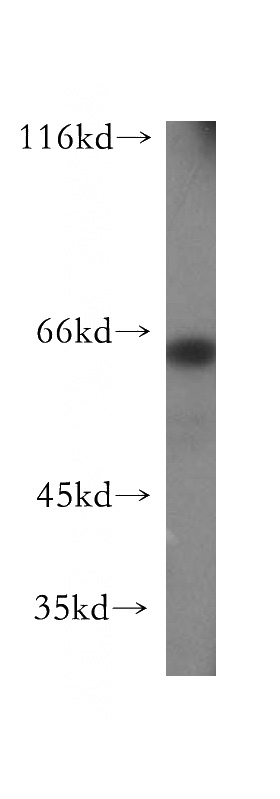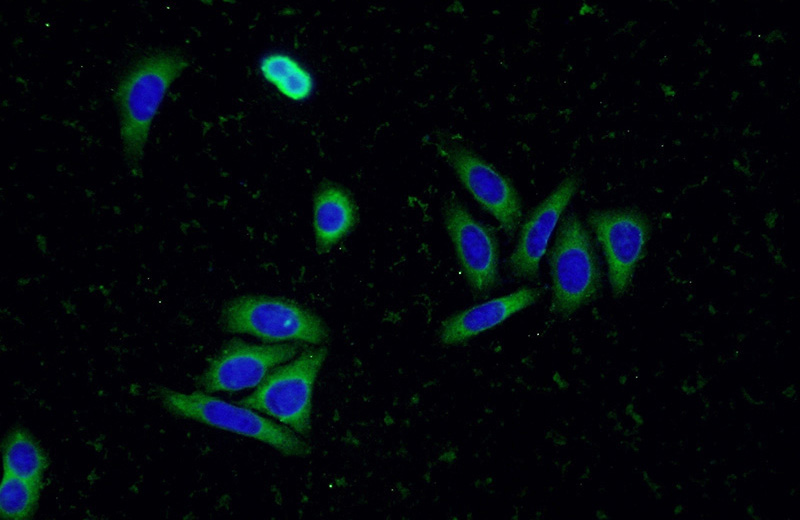-
Product Name
GRB10 antibody
- Documents
-
Description
GRB10 Rabbit Polyclonal antibody. Positive IF detected in HepG2 cells. Positive WB detected in HepG2 cells. Observed molecular weight by Western-blot: 65 kDa
-
Tested applications
ELISA, WB, IF
-
Species reactivity
Human,Mouse,Rat; other species not tested.
- Immunogen
-
Isotype
Rabbit IgG
-
Preparation
This antibody was obtained by immunization of GRB10 recombinant protein (Accession Number: XM_017012064). Purification method: Antigen affinity purified.
-
Clonality
Polyclonal
-
Formulation
PBS with 0.02% sodium azide and 50% glycerol pH 7.3.
-
Storage instructions
Store at -20℃. DO NOT ALIQUOT
-
Applications
Recommended Dilution:
WB: 1:200-1:1000
IF: 1:20-1:200
-
Validations

HepG2 cells were subjected to SDS PAGE followed by western blot with Catalog No:111198(GRB10 antibody) at dilution of 1:500

Immunofluorescent analysis of (-20oc Ethanol) fixed HepG2 cells using Catalog No:111198(GRB10 Antibody) at dilution of 1:50 and Alexa Fluor 488-congugated AffiniPure Goat Anti-Rabbit IgG(H+L)
-
Background
Growth factor receptor-bound protein 10 (GRB10) is an adapter protein which modulates coupling of a number of cell surface receptor kinases with specific signaling pathways. GRB10 has three consensus domains including pleckstrin homology (PH) domain, SH2/SH3 domain and Ras-associating domain. By binding to kinases, GRB10 suppresses signals from activated receptors tyrosine kinases, including the insulin (INSR) and insulin-like growth factor (IGF1R) receptors. It may play a role in mediating insulin-stimulated ubiquitination of INSR, leading to proteasomal degradation.
Related Products / Services
Please note: All products are "FOR RESEARCH USE ONLY AND ARE NOT INTENDED FOR DIAGNOSTIC OR THERAPEUTIC USE"
